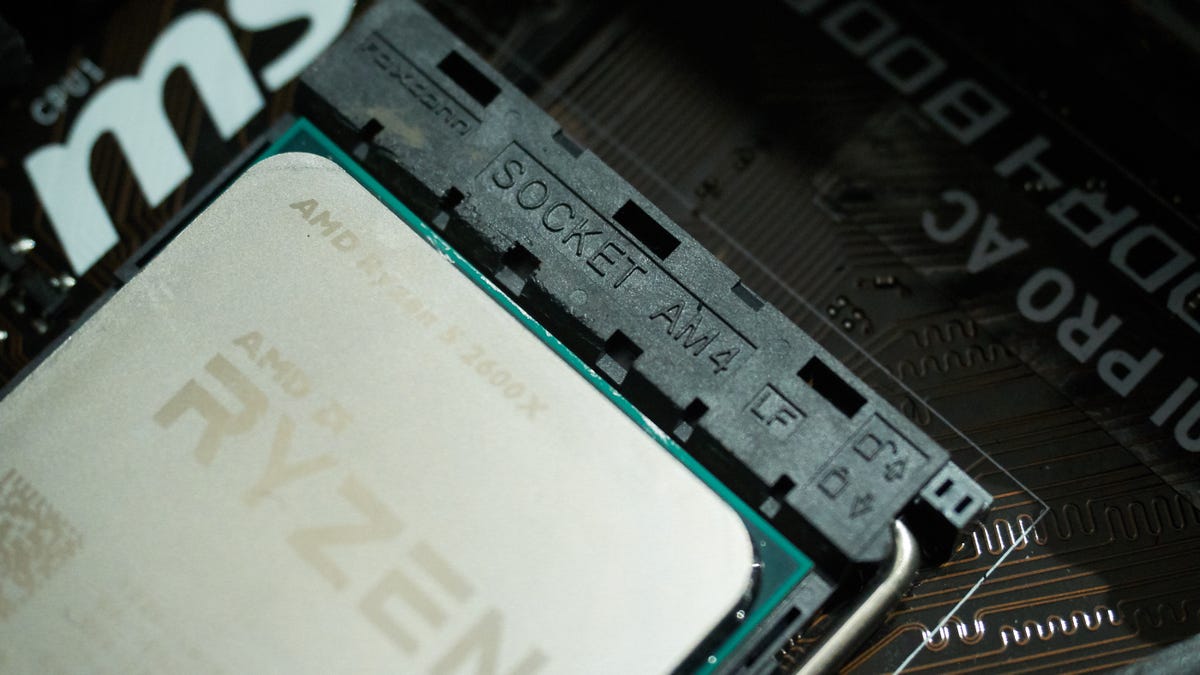https://gizmodo.com/amd-is-sticking-with-its-am4-socket-and-thats-great-if-1843593680

It’s a small thing that only people building and upgrading their own PCs will appreciate but to the delight of AMD enthusiasts, the company recently announced that it would make its future Zen 3 architecture compatible with the older X470 and B450 motherboards, and it would be sticking with its AM4 socket too. Initially, the company said its future CPUs would be compatible with only X570 and B550 motherboards and higher, while still keeping the AM4 socket, at least for one more generation of processors. Either way, AMD has made good on its 2016 promise of continuing support the AM4 socket through 2020, and likely into 2021 at this point. But how much longer can AMD use the same socket, especially when Intel has shown less inclination to do the same?
It actually all depends on the future schedule of I/O (input/output) technologies, or what sort of capabilities motherboards and other PC components will have in the future. BIOS updates aren’t a long-term solution, and AMD’s beloved AM4 socket, as well as its X470 and B450 motherboards, will have to become another piece of computer history at some point.
With the release of its Zen architecture and Ryzen 1000 series in 2017 AMD leveled the playing field against Intel. Every year it’s dominated the multicore space, and it was even the first of the two to make CPUs with 7nm transistors—all on the same AM4 socket. That is no small feat. As Robert Hallock, senior technical marketing manager at AMD, detailed in a recent blog, there was a time when PC builders had to replace their motherboards every CPU generation. That’s no longer the case. AMD has shown (Intel, too), that it can get around physical hardware changes with BIOS updates to their motherboards and extend compatibility into the next generation of processors.
While making the next generation of CPUs compatible with X470 and B450 motherboards is great for consumers in the short term (I have a X470 motherboard myself), there are lots of challenges that come with it, most notably constraints with SPI ROM (Serial Peripheral Interface Read-Only Memory) capacities in that generation of motherboards—or simply put, how fast and how much data those motherboards could send to and receive from other PC components and peripherals. AMD said that those motherboards’ BIOS sizes would not be large enough to support the full range of AM4 socket processors.
So if you install the BIOS for the next-gen CPUs, it will disable support for many existing AMD Ryzen CPU models, as AMD notes in its Reddit post, to create the ROM space it needs to support the new CPU. Not only that, but you won’t be able to flash back to an earlier BIOS version. Once you update, that’s it. And don’t expect to use a 400-series motherboard with a 5000-series or whatever numbered Ryzen desktop processor. AMD says its next-gen CPUs will be the end of the line, for real this time. So while AMD is continuing to offer support for older motherboards and chipsets the argument could be made that you might as well upgrade to a 500-series or higher motherboard and reap the benefits of those high capacity PCIe 4.0 NVMe M.2 SSDs—when the prices eventually come down, that is.
These are not uncommon issues that AMD and Intel have faced, and continue to face, when deciding what motherboards to support, when to update their sockets, and what CPUs will be supported by either. Intel just rolled out a new socket for its current-gen processors, after being on the LGA 1151 socket since 2015, to support improved power delivery and future incremental I/O features, which makes it seem like it’s trying to plan well in advance for whatever I/O features appear down the road. AMD will have to give up its beloved AM4 socket, too, for the same reason, but it’s focused on offering the same compatibility right now for as long as it can.
The AM4 socket isn’t as old as Intel’s now-retired LGA 1151. There’s still life left in it. How much is the question. It’s possible that AMD could stick with the same socket for as long as Intel stuck with its LGA 1151, but at least its CPU, chipset, and socket lineage is less complicated than Intel’s, something that I’ve always appreciated about AMD.
There are two versions of Intel’s LGA 1151 socket, and both of them support different CPUs and different motherboard chipsets. Revision one supported Intel’s 6th (Sky Lake) and (Kaby Lake) 7th-gen desktop processors. Revision two supported its 8th (Coffee Lake) and 9th-gen (Coffee Lake refresh) exclusively. So that means any of the later generation CPUs are not supported by 200-series motherboards and earlier, not because of a lack of a BIOS update, but because the updated socket reassigned some pins to support the requirements of 6-core and 8-core CPUs. So you could say that both LGA 1151 versions are actually different sockets even though they have the same number of pins and the same dimensions.
9th-gen CPUs work on the same 300-series motherboards as the 8th-gen, but those motherboards need a BIOS update to work with the 9th-gen. But the Z390 motherboard chipset doesn’t need the same BIOS update because it rolled out with the 9th-gen CPUs. Confusing? I know.
AMD’s compatibility is simpler and reaches further across generations, with some BIOS updates, of course, but no socket refreshes or completely new sockets. Leaving out AMD Ryzen desktop processors with integrated graphics, 1st-gen Ryzen works with 300 and 400-series motherboards. 2nd-gen Ryzen works with 300, 400, and 500-series, except the B550. 3rd-gen Ryzen works with 400 and 500-series, and now the next-gen will work with 400, 500, and 600-series, assuming it’s called the 600-series. I also assume 500-series motherboards will work with next-gen CPUs, too.
There are some perks to buying AMD’s most up-to-date motherboards though, like PCIe 4.0 support, which can handle double the amount of bandwidth as PCIe 3.0, but depending on your budget, that might not make much sense. If you’re mostly interested in a PCIe 4.0 SSD, one with a 1TB of storage could run over $200. SSDs speed doesn’t matter so much if you’re only gaming (Intel didn’t include PCIe 4.0 support at all on its latest 10th-gen compatible motherboards), so putting most of your money toward a better CPU while waiting to upgrade the motherboard is generally a better option considering the availability and pricing of such tech.
No, AMD won’t be able to keep the same socket forever, but unlike Intel, if your introduction to its Ryzen processors was with a first-generation CPU and a 400-series motherboard, you’ll be able to keep that motherboard for another processor generation, and that’s amazing for consumers, keeping the same motherboard and the same socket for four generations of processors. Say what you want about AMD versus Intel core counts and benchmarks; AMD has the more consumer-friendly upgrade path, and when you’re pinching pennies on a DIY desktop build, that sort of thing matters a lot.
via Gizmodo https://gizmodo.com
May 25, 2020 at 12:06PM




